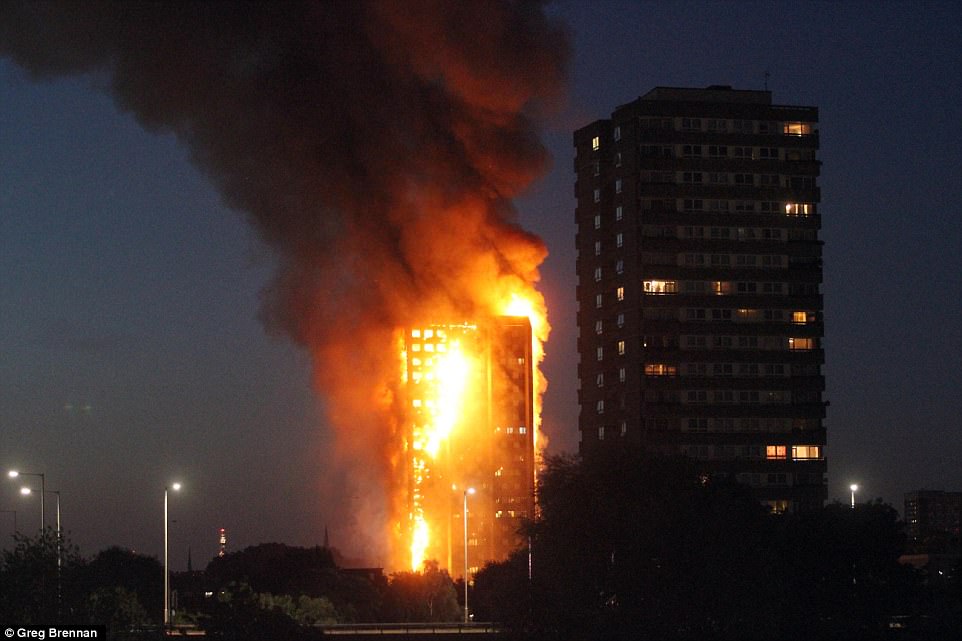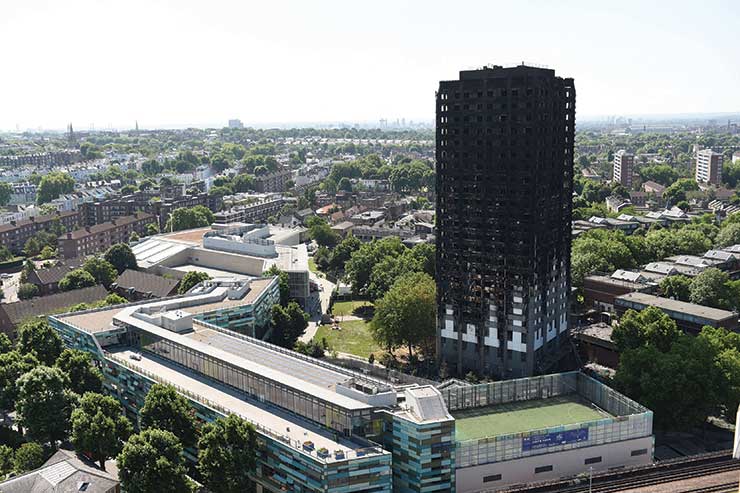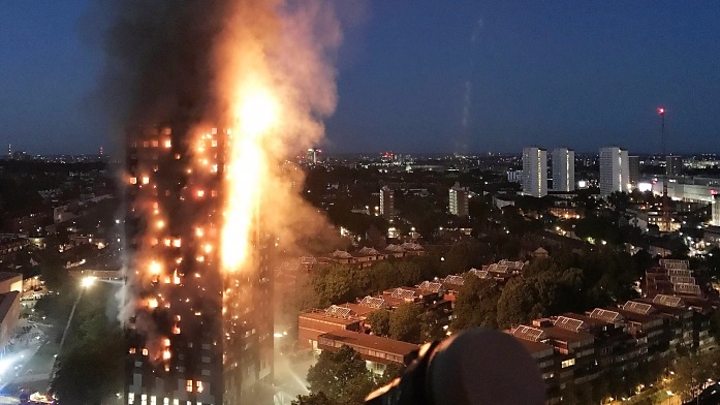The Grenfell Tower Fire: A Catastrophe Foreseen Yet Unheeded
The devastating fire at Grenfell Tower in London on June 14, 2017, marked a pivotal moment in the history of urban safety regulations, triggering a global conversation about fire safety and building regulations. This tragedy, which resulted in the loss of 72 lives and left hundreds homeless, was not an unforeseen incident; rather, it was a culmination of years of warnings and frustrations voiced by residents regarding the building’s inadequate safety measures. The Grenfell Tower fire highlighted systemic failures within the governance of public housing and the urgent need for reform in building regulations. This article examines the historical context of Grenfell Tower, the persistent safety concerns raised by its residents, and the broader implications of this horrific event, often labeled as a “disaster waiting to happen.”
Understanding Grenfell Tower: A Historical Perspective
Grenfell Tower, a 24-story residential building located in Kensington, West London, has a history that reflects the complexities of urban development. Originally constructed in 1974, the tower was designed as public housing aimed at providing affordable accommodation for the local community. With approximately 120 apartments housing around 200 residents, Grenfell Tower was managed by the Kensington and Chelsea Tenant Management Organisation (KCTMO). In 2016, a £10 million refurbishment was completed, ostensibly to modernize the building and improve living conditions. However, this renovation raised significant questions about whether the upgrades genuinely enhanced fire safety or inadvertently worsened the situation.

The refurbishment included the installation of new cladding as part of an aesthetic overhaul, which, while visually appealing, sparked concern among residents about its fire safety implications. Reports indicated that the materials used in the cladding were flammable, thus contributing to the flames’ rapid spread during the fire. This sparked a broader discussion about the priorities of local authorities and housing management organizations, raising concerns about whether the safety of residents had been sacrificed for cosmetic improvements.
A Pattern of Ignored Warnings
For years, residents of Grenfell Tower voiced their concerns about fire safety, but their warnings fell on deaf ears. As early as 2013, the Grenfell Action Group (GAG), a community advocacy group, raised alarms about serious risks within the building. Notably, a frightening incident involving faulty electrical wiring nearly triggered a fire, which served as a harbinger of the dangers lurking within the structure. In November 2016, just months before the tragedy, GAG published a chilling statement on their website, asserting, “It is a truly terrifying thought, but the Grenfell Action Group firmly believes that only a catastrophic event will expose the incompetence and negligence of KCTMO.” Despite these evident risks, the management’s response was one of neglect, leading to heightened frustration and fear among residents.

The systemic failures extended beyond the management of the building; they represented a significant gap in the regulatory framework governing fire safety measures. The fact that residents felt compelled to issue repeated warnings points to a broader issue: the disconnect between policy-makers, building management, and those directly affected by safety regulations. The Grenfell tragedy underscores the urgent need for mechanisms that allow residents’ voices to be heard and acted upon.
Inadequate Safety Protocols and Emergency Preparedness
One of the most alarming aspects of Grenfell Tower was its design, particularly the reliance on a single main staircase as the sole escape route during emergencies. This design flaw posed a severe threat, especially in a high-rise structure where hundreds of individuals could find themselves trapped in the event of a fire. Residents reported feeling vulnerable and unprotected, knowing that the only escape route was often cluttered with smoke and flames. Furthermore, the building management’s instructions to tenants to “stay put” during a fire exacerbated the dangers, as the flames spread rapidly, making it increasingly difficult to find safe exits. The Grenfell Action Group highlighted the absence of essential safety features, such as regular inspections of fire extinguishers, malfunctioning fire alarms, and the lack of sprinkler systems, which would have mitigated the risk of a catastrophic fire. These operational deficiencies not only violated basic safety protocols but also reflected a broader culture of negligence within the housing management system. Residents’ repeated calls for better safety measures were, tragically, ignored, culminating in an event that could have been prevented with appropriate action.

Renovation Controversies: Aesthetic Over Safety?
The 2016 refurbishment not only raised eyebrows but also ignited a fierce debate about the priorities of public housing renovations. Critics of the renovation argue that the focus on cosmetic improvements took precedence over essential safety upgrades. The decision to use combustible cladding materials, which were later found to have contributed significantly to the fire’s spread, led many to question the motivations behind the renovation. Were the aesthetics of the building prioritized over the safety of its residents? A community that depended on the local authority for their safety was left to grapple with the consequences of a decision that appeared to prioritize visuals over vulnerability. This controversy has led to calls for a reevaluation of renovation practices in public housing. Advocates emphasize that safety should always be the primary concern, and any updates to buildings must involve rigorous assessments of materials and design choices. The Grenfell tragedy serves as a stark reminder of the potential consequences of neglecting these principles.
A Night of Horror: The Fire Erupts
In the early hours of June 14, 2017, the fire erupted, engulfing Grenfell Tower within minutes. Eyewitness accounts and harrowing images captured the terrifying reality faced by residents, many of whom escaped only with minimal clothing. Families were seen frantically calling for help from windows, trapped by the chaos of a blaze that spread faster than anyone could have anticipated. Survivors recounted the frantic search for safety amid dark smoke and confusion, with many describing a desperate struggle to locate exits in a building that had become a death trap. Following the incident, the Grenfell Action Group reiterated their distress, stating, “We have issued countless warnings about fire safety in Grenfell Tower. Every single one was ignored. We said a disaster like this was inevitable – it was only a matter of time.” The aftermath of the fire revealed not only personal tragedies but also systemic failures that allowed such a disaster to occur, prompting widespread public outcry and demands for accountability.

The Lessons of Grenfell: A Call to Action
The Grenfell Tower fire stands as a poignant reminder of the critical importance of fire safety regulations and the necessity of listening to resident concerns. The events leading up to this tragedy illuminate several crucial lessons: the necessity of establishing multiple evacuation routes in high-rise buildings, the importance of installing and maintaining effective fire suppression systems, and the dire need for regular inspections of fire safety equipment and electrical wiring. Above all, the Grenfell disaster underscores the imperative to prioritize safety over superficial upgrades and cost-cutting measures. In the wake of the fire, calls for reforms have gathered momentum, with activists advocating for comprehensive reviews of fire safety regulations across the UK. This includes revisiting the standards for building materials, enhancing fire safety training for building management, and developing robust protocols for community engagement and action in situations where residents express safety concerns. The Grenfell tragedy must serve as a catalyst for change to ensure that no community faces similar dangers in the future.
Conclusion: A Preventable Tragedy
The Grenfell Tower fire was not just a tragic accident; it was a foreseeable disaster that claimed lives due to systemic failures and negligence. The warnings of the residents were clear, yet they were tragically ignored. This catastrophe serves as a sobering reminder that fire safety standards cannot be compromised, and the voices of individuals living in vulnerable conditions must always be heeded. By reflecting on the lessons learned from Grenfell, we can work towards preventing similar tragedies and ensuring the safety of those who call high-rise buildings home. The imperative to act is clear: we must prioritize safety, listen to community voices, and implement rigorous regulations to protect against the preventable loss of life.

















